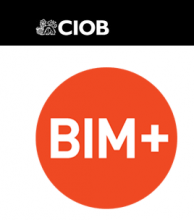Submitted by L. Millard on Wed, 27/02/2019 - 14:51
BIM+, the Chartered Institute of Building (CIOB) publication, has published an interview with CSIC Director Dr Jennifer Schooling OBE that discusses BIM as information management across the whole lifecycle of an asset.

Asked about her views on the national progress of BIM, Dr Schooling said; “There are obvious benefits during design and delivery, but the biggest benefits will come from using information throughout the asset’s lifecycle. BIM needs the engagement of people who will own and operate the asset once it has been handed over to ensure that project teams get the right information requirement specifications to respond to. Without that, they can only really manage the information that is of most relevance to them.”
Understanding the performance of our infrastructure is, said Dr Schooling, key to securing wholelife value: “CSIC has been looking at how we can use live data from sensors and various other sources to really understand how assets perform. That enables us to calibrate our design models, better understand the mechanics of how things operate and perform post-construction.”
Highlighting a number of innovative CSIC projects, including monitoring the heritage assets Christopher Wren’s St Mary Abchurch and George Dance’s Mansion House, as part of Transport for London’s Bank tube station capacity upgrade, Dr Schooling cited the benefits to the asset owners and managers.
“We were feeding our data on an hourly basis to the contractor’s monitoring dashboard, providing much more detailed information about the asset than they would have been able to get otherwise… The ultimate aim is to avoid disasters, like the Genoa bridge, as well as disruptions such as the closure of the Forth Road bridge and the Hammersmith flyover. The more information we have about key assets at important points on our road or rail networks, the more likely we are to spot things before they become a crisis, dealing with them in a timely way with as little disruption as possible.”
Managing and curating data is critical. Dr Schooling noted that while the construction industry creates a huge amount of data during design, construction and operation “we’re not at all good at curating that data and therefore learning from the data we have generated in the past”.
Looking ahead to the opportunity of BIM, Dr Schooling cited the National Infrastructure Commission’s Data for the Public Good report that suggests the creation of an information management framework to make data sharing seamless and the development of digital twins to help manage data through the life of an asset:
“A digital twin is really a progression of BIM. BIM will ultimately be subsumed into this bigger idea of a digital twin, which accompanies the physical asset throughout its life. All the information about the physical asset is recorded in the digital twin which will bring a huge number of benefits, both in terms of the individual asset and making the right decisions about it, and feeding learning when we design and build the next one of them.”
Read the full BIM+ Q&A article.
